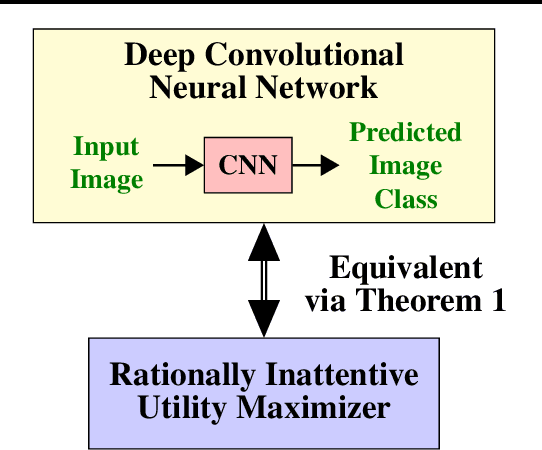Behavioral Economics Approach to Interpretable Deep Image Classification. Rationally Inattentive Utility Maximization Explains Deep Image Classification
Paper and Code
Feb 16, 2021


Are deep convolutional neural networks (CNNs) for image classification consistent with utility maximization behavior with information acquisition costs? This paper demonstrates the remarkable result that a deep CNN behaves equivalently (in terms of necessary and sufficient conditions) to a rationally inattentive utility maximizer, a model extensively used in behavioral economics to explain human decision making. This implies that a deep CNN has a parsimonious representation in terms of simple intuitive human-like decision parameters, namely, a utility function and an information acquisition cost. Also the reconstructed utility function that rationalizes the decisions of the deep CNNs, yields a useful preference order amongst the image classes (hypotheses).
 Add to Chrome
Add to Chrome Add to Firefox
Add to Firefox Add to Edge
Add to Edge